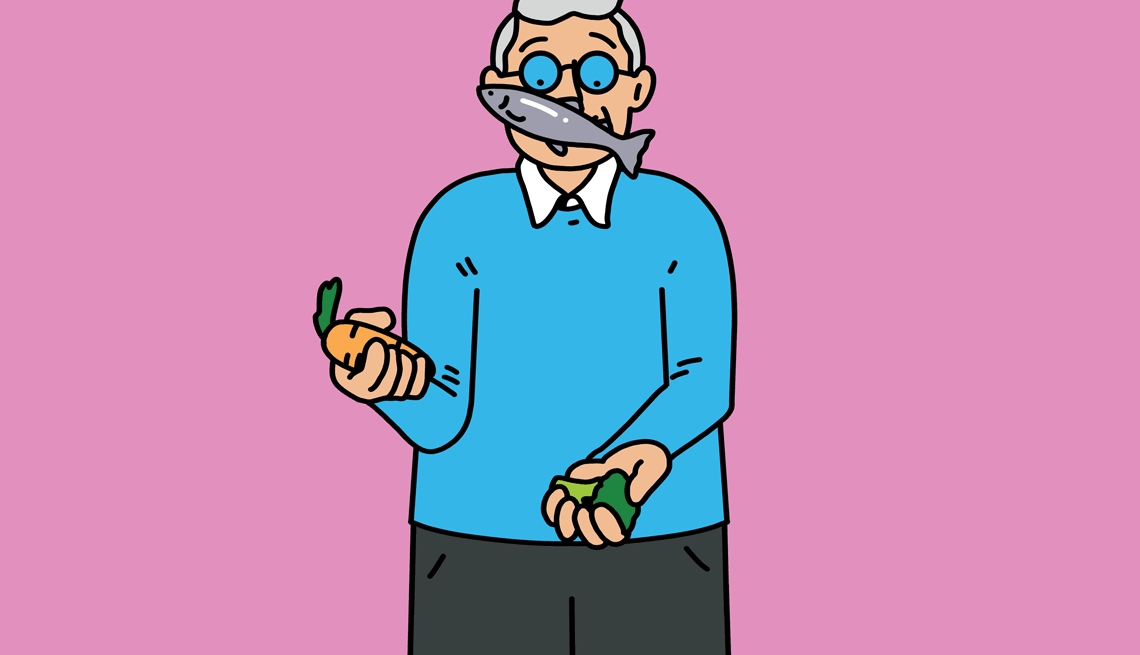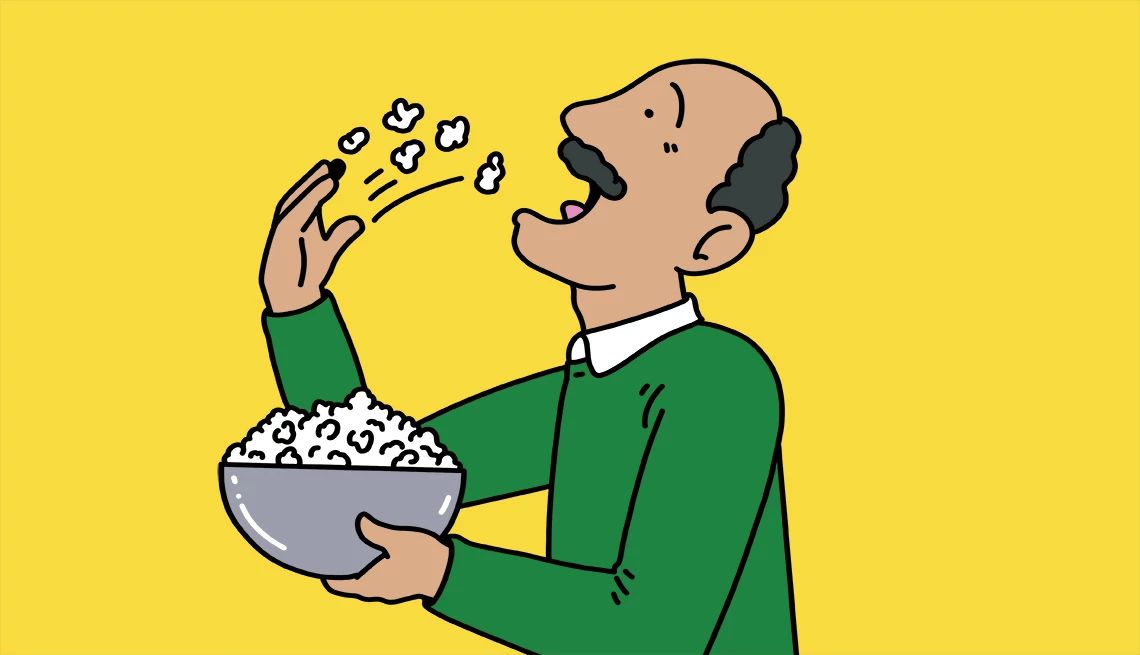AARP Hearing Center


Eliminating certain foods from your diet seems like the norm when you’re trying to lose weight. You cut calories. You cut fat. Basically, anything that’s crammed with carbs, sweetened with sugar or deep-fried is off-limits.
But dieting doesn’t have to mean deprivation. Many delicious and healthy foods can still be part of your meals if you focus less on calories and more on the overall quality of what you eat. “Lean into whole foods and away from processed foods as much as you can,” advises Katie Sanger, a registered dietitian from Reno, Nevada.
The one food group you can indulge in without gaining weight is vegetables, especially non-starchy ones like broccoli, celery, zucchini and bell peppers, according to Lona Sandon, an associate professor of clinical nutrition at the University of Texas Southwestern Medical Center. “Non-starchy vegetables are the best ones to overconsume, because they’re so much lower in calories than other food choices,” she says.
Even with vegetables, resist the temptation to go hog wild on any one food. Eat nothing but carrots and you’ll have an overabundance of beta-carotene at the expense of other nutrients. (Your skin might even turn orange.) Variety is the secret spice to any weight-loss diet. “When we focus on just one food, we are getting very minimal nutrients,” Sanger says. “Everything in moderation.”
When making changes to your diet, get some help from your primary care doctor or a dietitian. Your doctor can check your vitamin and cholesterol levels, while a dietitian can assess your needs and create a meal plan that’s not only tailored to your goals but also sustainable over the long term.
Mix and match these 25 foods to your heart’s content as part of an overall well-balanced diet.
1. Berries
Make berries your go-to cereal topper or dessert, and start reaping the myriad health benefits. Strawberries, blackberries, raspberries or blueberries are all low in calories and rich in nutrients like fiber, vitamin C, folate and potassium. The natural plant pigments that give these fruits their vibrant colors have antioxidant and anti-inflammatory properties that may protect against heart disease, diabetes and cancer. Blueberries are rich in a flavonoid called anthocyanin that can help boost the immune system.
And unlike other fruits, berries are relatively low in sugar. “You want to be mindful of how much sugar you’re consuming, even if it is from fruit,” Sanger says. Berries are low on the glycemic index, so they won’t spike your blood sugar, and you’ll digest them slowly. That’s important when weight loss is the goal.
2. Chickpeas
Chickpeas, also called garbanzo beans, are a member of the legume family (which includes beans, peas and lentils). You’ll find them in hummus, the Middle Eastern spread made from mashed chickpeas blended with olive oil, tahini, lemon juice and spices. They also make an excellent salad topper.
Chickpeas are higher in calories (120 per half-cup serving) and carbs (20 grams per serving) than many of the other foods listed here, but they’re packed with nutrients. “Chickpeas are very fiber-rich, and they’re a good source of protein,” Sanger says. They’re also a good source of potassium, calcium and vitamin A, and research suggests they might help with weight management and heart disease prevention.
3. Mushrooms
The mushroom family is enjoying a renaissance. In 2022, The New York Times named this edible fungus “ingredient of the year.” It’s no wonder, since mushrooms make a lower-fat and lower-calorie stand-in for meat in recipes. “They don’t have the protein and the same level of B vitamins that meat has, but they have that chewy texture, which makes it easy to put them into a dish and reduce some of the meat,” says Sandon. Mushrooms are heterotrophic, which means they absorb their nutrients from the environment around them. Cremini and portobello mushrooms are high in selenium, while shiitake mushrooms are a good source of vitamin B6.
4. Celery
Don’t relegate celery to the veggie tray. This versatile vegetable is so much more than a cocktail party hors d’oeuvre. For a mere 6 calories per stalk, it offers fiber plus nutrients like potassium, vitamin A and lutein, along with a satisfying crunch.
Another benefit: Celery is 95 percent water, with almost a half-cup in each serving. The combination of water and fiber fills the belly quickly, which prevents overeating, Sanger says. If you find this simple veggie too plain on its own, spread a thin layer of hummus on it, or add flavor with some lemon juice or chives.
5. Popcorn


If you’re looking for the perfect low-cal snack, you’ve found it. Each crunchy bite of popcorn is filled with fiber and whole grains. With a mere 30 calories per cup, you can chow down on large quantities with zero guilt. One big caveat is to be careful with how you prep your popcorn. Popping it in oil and drowning it in butter and salt will override its health benefits — a tub of movie theater buttered popcorn can contain more than 1,000 calories and 2,650 milligrams of sodium. Instead, air-pop it, drizzle on a little olive oil or avocado oil, and add just a pinch of sea salt for flavoring, Sanger suggests. Try to limit yourself to 3 cups, which is still a hefty portion.
6. Grapefruit
You may remember the grapefruit diet, a fad from the 1970s: “Eat grapefruit with every meal and the weight will melt off,” or so its proponents claimed. While it isn’t a magical fat-burning food, adding grapefruit in moderation to your diet isn’t a bad idea if you’re trying to lose weight. Because the fruit is 88 percent water, it should fill you up faster, so you’ll eat less. Just don’t coat it with sugar to make it taste sweeter.
And make sure it doesn’t interact with your medications. “Grapefruit or grapefruit juice can interfere with some types of blood pressure medications and cholesterol-lowering medications,” Sandon says. Ask your doctor or pharmacist whether it is safe to eat with your current meds.
7. Spinach
It’s hard to find a healthier food than spinach. For just 40 calories a cup, it offers protein, folate, vitamin A and more than 400 percent of your daily requirement of vitamin K, a nutrient that’s essential for bone strengthening and preventing blood clots. Its high potassium and magnesium content can help regulate blood pressure, and the fiber fills you up. Plus, it can help keep your gastrointestinal tract moving smoothly to prevent constipation. If you’re not enamored with spinach, you can easily tamp its flavor down by adding it to smoothies or casseroles.







































































You Might Also Like
25 Healthy Snacks to Eat After Age 50
Craving a sweet or savory bite? Try these
Eat This Before Every Meal
Turns out, your mother was right
25 Processed Foods That Are Surprisingly Healthy
Surprising health benefits of processed foods